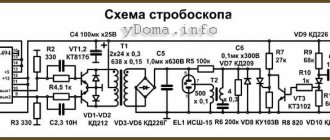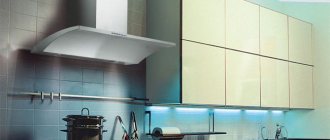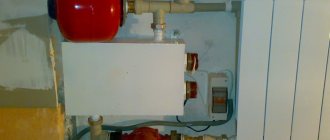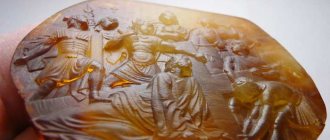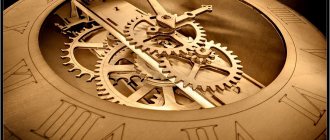The layout of a house and its architectural model - how do they differ? The first can be made from available materials: paper, cardboard or wood. It does not necessarily have to repeat the shape of any particular structure. The architecture of the building can be anything, as long as both you and those around you like the result of your creativity.
An architectural model is an exact copy of a building with a repetition of all the main and minor features. It is built from expensive materials and can take months of hard work to complete. Therefore, we suggest first building a model of a house from scrap materials. Don't know how? In this article you will find recommendations and detailed instructions on how to make a house model with your own hands from paper, cardboard and wood.
Miniature paper house
The model of a paper house, the diagram of which is attached in this article, is a simple construction, although the work on its creation can be an interesting creative process that requires attention and perseverance. You will need thick paper; newspaper or packaging paper will not work.
It is better to take a standard A4 sheet measuring 29x21 cm. If the contours of your future home do not fit into the size of the sheet, you can glue two together using the “joint to joint” method, overlaying a strip 2 centimeters wide. After the workpiece of the required size has been obtained, it is necessary to make markings. We propose to build a model of a paper house, which will be rectangular in plan, two-story, with three doors, windows and a gable roof.
We build it ourselves: drawings and dimensions of a children’s house in the country
Excellent compact houses for children made by domestic and foreign manufacturers are offered in stores. However, it is much more interesting to build a children's house with your own hands ; drawings with dimensions can be found on the Internet and you can choose the optimal one. Building a new corner of your own with a child of any age will allow you to spend time together and usefully, developing a trusting and warmer relationship. In addition, the house, to the construction of which the child had a hand, even in small things, will become an important object for him. Plus, it will teach him responsibility.
At the stage of drawing a drawing, it is necessary to communicate with the child: how he wants his house to look, in what shape, what color. This moment is important both for education and for the construction itself. This could be the house of a fairy-tale hero, a princess’s tower, or a cartoon garage.
We offer several drawings that will help you decide on a house or serve as the basis for creating your unique structure.
Externally, the house should be designed in accordance with the style of the residential building and the entire landscape. At the same time, the structure should be attractive to the child, so it can be decorated in bright colors and fit, for example, into the concept of a playground.
Drawing
First of all, we recommend copying our diagram, which you see in the photo, in order to indicate the dimensions of the future building. Then you need to decide what the length and width of the layout will be. Write these numbers on the diagram. Next, determine the height of the first and second floors, as well as the roof. Now you can transfer the resulting drawing to the base sheet using a ruler and pencil, measuring all the parameters of the future house. The next step is to draw windows and doors. Their location can be changed as desired, depending on your taste. A paper house model allows you to make design changes at any stage of construction.
Construction of a children's cardboard house
A small temporary house made of cardboard will delight your child without leaving your apartment. After all, it is more intended specifically for indoor spaces, since moisture, sun and temperature changes make an already unreliable structure completely fragile.
To make such a model you will need thick cardboard . These can be individual sheets or a ready-made large box. You can use the drawing below and transfer it to the material. The parts must be cut carefully, avoiding crumbling and creasing. You can connect using cut grooves and fix them with glue, tape, or a stapler. The house can be decorated by the child himself; appliqués, stickers, and pieces of fabric can be used as decoration.
Layout assembly
At the next stage, you need to draw all the “wings” that you see in the diagram. They will act as mounting brackets when assembling the layout, supporting the roof and connecting the walls. Next comes the most important part of the work, which requires accuracy and attention. Go along all the lines of the drawing with a ballpoint pen along the ruler and with pressure. This is done so that you can bend the paper in the right place.
A paper house layout requires precise fold lines. After all the boundaries have been drawn, you can cut out windows and doors, as well as “wings” with scissors. The next important point: it is necessary to correctly bend the entire structure and glue it in the right places. For this we recommend PVA glue. When the model is dry, you can start painting.
Step-by-step instructions for making and assembling a plywood house
The sequence of making a dollhouse from plywood is as follows.
Table 1. Making a dollhouse
| Illustration | Description |
Step 1 | In accordance with the drawing, the dimensions of the parts to be cut are applied to the surface of the plywood. |
Step 2 | Fragments of large size and simple shape are cut out on a machine. |
Step 3 | In accordance with the drawing, the required number of floors is cut out. |
Step 4 | To cut out smaller parts, use a jigsaw |
Step 5 | The junction of two roof elements (slopes) on one side is taped with tape. |
Step 6 | The parts are turned over and the ends are coated with glue at the points of contact. The parts are pressed and installed in the required position. |
Step 7 | Glue the pediment. |
Step 8 | A jigsaw is used to make window and door openings. |
Step 9 | To insert a jigsaw file and start cutting out the window opening, first drill a small hole. |
Step 10 | You will have to drill a hole on all sides of the window opening. |
Step 11 | The inside of window and door openings is sanded using sandpaper. |
Step 12 | For large parts, use a grinding machine. |
Step 13 | Holes for self-tapping screws are drilled using a countersink drill so that the screw head is subsequently recessed into the solid part. |
Step 14 | The parts are painted in the selected colors. |
Step 15 | The house is assembled using ordinary self-tapping screws, the heads of which are subsequently painted to match the color of the part. |
Note! The method of fastening plywood parts depends on its thickness and the size of the elements. When the material is thin and the house itself is not large, the elements can be fixed using wood glue or using special grooves.
Assembling a small house
Video - How to make a plywood dollhouse
Cardboard house model
Such buildings are made not only from paper. You can also make a model of a house with your own hands from cardboard, a material strong enough to make the building look “real”, with opening doors, windows, floors and ceilings, interior decoration and even inhabitants sitting inside on miniature sofas and chairs.
It all depends on how interested the “builder” is in the final result. He can build any model of a house with his own hands. However, its implementation is a complex creative process that requires accuracy and perseverance. You will need the usual tools: scissors, a retractable stationery knife, an awl, a ruler (preferably metal) and PVA glue.
Plywood growth house
This design can be used both outdoors and in the apartment. The house is easy to assemble, literally within 5 minutes it can also be easily disassembled into convenient fragments that can be stored in the pantry.
On a hot day, such a house on the site will provide comfortable conditions for playing outdoors.
Play structure for home
In essence, it is an enlarged copy of a dollhouse. Therefore, its production takes place using the same technology.
Table 2. Step-by-step instructions
| Illustration | Description |
Step 1 | First, a drawing is made with details: determining the dimensions, shapes, number of parts, fixation points. |
Step 2 | Patterns of individual fragments are made on a scale of 1:1 and transferred to sheets of plywood. After this the material is cut out. |
Step 3 | The parts are polished. |
Step 4 | If necessary, parts are painted. |
Step 5 | The house is being assembled. |
Particular attention should be paid to the interior decoration of the house. The design may provide for a bench and a folding table, or a shelf on the wall. Furniture can also be portable plastic or wooden.
When operating the house outdoors, it is necessary that the base be dry, so the structure is placed on a podium or dry grass
Plywood is often used in the furniture industry and for the manufacture of a large number of boxes of various sizes and other very beautiful and functional crafts. What plywood products can you make with your own hands? Read in the special article.
Inside the house, you can lay a soft mat or mattress on the floor, on which the child will feel comfortable.
Corrugation as the main material
It is better to take two types of cardboard for making a model: smooth and three-layer corrugated. The second will be used for load-bearing walls, floors and ceilings, and the first will be used to make a corner for connecting individual parts of the structure, small parts of external and internal design. A cardboard house model needs a base. This can be a plate glued together from two layers of corrugation or cut from plywood. The base or base of the layout is drawn out according to the dimensions of the future house and can be filled with decorative miniature flower beds, garden vases, and benches.
Next, you need to draw a diagram of the location of the walls, porch and extensions on the base. After this, you can begin making the main parts: walls with cut out door and window openings, the ceiling and floor of the second floor (if the house is two-story). To assemble the structure, you need to prepare corners from thin, smooth cardboard. The longer the corner, the stronger the connection. Optimally, its length should be at least 70% of the connection length. The width of the cardboard corner is 1.5-2.0 cm.
Tools and material
Making a plywood house is carried out in several stages. Particular attention should be paid to acquiring the necessary tools and materials.
List of materials and tools:
- Plywood sheets, the number of which is calculated in accordance with the drawing, taking into account the size and number of parts. The resulting value is rounded up. On average, it takes 3 sheets of plywood to make a dollhouse.
- The roof of the house is made of plywood, corrugated or regular cardboard.
- To ensure strong fixation of plywood parts, use quick-drying wood glue.
- For temporary and additional fixation of parts, you can use mounting tape.
- Sandpaper is used to sand parts. Particular attention should be paid to the ends of the elements.
- The parts are cut using an electric jigsaw.
- The parts are fixed when assembling the house using self-tapping screws.
- At the stage of preparing the material for cutting, you will need a ruler, tape measure, and pencil.
Required Tools
After assembling the house, it needs to be decorated. To do this, use scraps and other remnants of finishing materials: wallpaper, film, colored paper, pieces of linoleum, fabric, felt, laminate. Window openings are filled with transparent plastic or plexiglass.
Wooden house model
A do-it-yourself house model from wood can only be made with the participation of adults, since the work involves woodworking machines for home use. They are quite dangerous if there are no working skills. Hand tools for woodworking also require caution when working with them. The blades of knives, planes, files and gravers have sharply sharpened cutting edges.
Advantages of plywood
Any materials can be used to make a dollhouse yourself, but plywood is used more often, as it has a number of advantages:
- A whole category of toys for children are made of wood, in particular plywood, due to its pleasant to the touch, warm surface.
- The light weight of the material allows you to create large structures that even a child can move from place to place.
- Plywood is a durable material, so structures made from it are reliable and durable.
- The material is affordable, which allows you to make a toy no worse than the one sold in the store, but for much less money.
- Working with plywood is easy, it is easy to process and does not require the use of special tools or professional skills.
- After assembly, the house can be painted or left as is, covered with transparent varnish - the surface of the plywood is smooth, with a pleasant natural pattern and shade.
Plywood has an attractive appearance and natural shade
Note! E0 grade plywood is an environmentally friendly and safe material. This type of material is used in the manufacture of goods for children.
Blanks
Do-it-yourself models of wooden houses require care during the work process. Creating them is an exciting creative activity, during which the master can show quick wits and ingenuity. First you need to make a drawing of the future house. Then make a base for the layout. After this, you can start creating parts.
It is better to make walls and floors from thin planks 1.5-2.0 centimeters wide and 5.0-7.0 mm thick. The workpieces are placed on a flat surface close to each other and fastened with the same slats, which are applied perpendicularly from above and pressed with some kind of weight. All parts are pre-coated with PVA glue. After the manufactured block has dried, it can be adjusted according to the drawing and joined with other parts.
Sawing parts
If you are not an Ace in sawing, then saw slowly, following all the lines of the drawing. The main thing in cutting is not to rush, otherwise the craft will be crooked and therefore ugly. When cutting, you must always hold the jigsaw straight at a 90-degree angle. Cut out the parts along the lines you precisely marked. The movements of the jigsaw should always be precise, even up and down. Also, do not forget to monitor your posture. Try to cut exactly along the lines to avoid bevels and uneven parts. If while cutting you go off the line or the grooves do not meet due to unevenness, then you should not worry. In the final process of work, adjust the parts with a flat file or sandpaper, and all the grooves will fit together.
Finishing
The assembled model must be sanded and polished. This is done manually using glass sandpaper grade 25-N on a fabric base. Then the surfaces are sanded clean with 8-N sandpaper until completely smooth. After processing, the layout can be painted, doors installed, windows inserted and finishing work carried out.
A home model created with your own hands, as a rule, has a removable roof. This is necessary to ensure free access to the interior, since toy furniture and other interior decorations will have to be installed in a miniature building. The surface of the walls is covered with “wallpaper,” i.e., painted strips of paper. The floor must be painted brown or covered with linoleum - it can be made from oilcloth.
Setting up the kitchen
Taking into account the specifics of the application, kitchen crafts are made from dense, water-resistant plywood.
This material is not afraid of moisture and steam, so it can last for several years. Plywood is usually used to make carved shelves, boxes for storing spices and other necessary small items, cutting boards, hooks for potholders, and souvenir refrigerator magnets.
If you have some experience, you can assemble an entire kitchen set with your own hands, which will not differ from the products of furniture factories. To do this, use thick sheets of plywood, a jigsaw or a hacksaw. And of course, you need to have some free time and desire.
How to treat the surface → Room decoration → How to choose the right paint → Surface treatment technologies → Leveling and finishing the walls → Selecting and applying a primer → Removal from the surface → Stretch ceilings and technologies → Reviews and testimonials
Expert opinion
Strebizh Viktor Fedorovich, leading construction foreman
To perform such work, you will need a jigsaw, including a hand tool for cutting out the smallest details in the image. If you want to clarify something, please contact me!
Architectural model of a building in a 3D model: advantages
Architectural models are complex products with many small details, and a number of nuances must be taken into account when creating them. Creating a real architectural model sometimes requires many weeks and hundreds of dollars. But 3D printing significantly reduces the cost of the project. In addition, the creation of models takes several hours, not weeks.
Architectural firms have been using CAD (Computer Aided Design) to create projects for many years. If a studio decides to install a 3D printer, it will not need to make any changes to the software. All you need to do is connect the device to your computer.
3D models allow architects to work more freely without the fear of making mistakes, and designs are much more accurate than actual models. Rendering 3D models on a printer is fast and saves significant resources. Such visualization is clearer and closer to reality than sketches, drawings and digital models.
Therefore, 3D printers quickly gained recognition in the industry, and more and more studios are using them for a variety of purposes - even printing real objects of urban architecture.
Modeling in ArchiCAD
Other programs for architects:
- Revit;
- AutoCAD Architecture;
- AutoCAD Civil 3D - more suitable for engineering communications;
- Chief Architect - better at home design;
- Rhino3D;
- CATIA;
- SketchUp - helps with architectural sketches and sketches;
- 3D Studio Max;
- Solidworks - more suitable for engineers.
Frank Gehry uses CATIA in his work
Roof of a children's house in the country
The construction market offers a wide selection of roofing materials - from budget slate to expensive natural tiles. For playhouses, it is better to purchase an inexpensive but reliable roof that you can quickly install with your own hands.
Ondulin fully meets these criteria. The sheet weighs only 6 kg, which allows it to be installed alone. The material is safe for children's health.
You don’t even need to leave your dacha to purchase. You can order roofing and components on the online store website shop.onduline.ru. Delivery is made from the warehouse of your nearest dealer within three working days.
Don't waste time searching for suitable materials - devote it to your loved ones!
General provisions
First, let's look at the motivation why it's worth taking on making a dollhouse with your own hands:
Advantages of making it yourself
- Saving. The price of factory-made models is quite high, while homemade wood products will significantly save the family budget;
- Uniqueness. The project you implement will be one of a kind; your daughter will definitely not find the same toy among her friends;
Unique toy castle made of plywood
- Compliance with desires. In your dollhouse there will be exactly the kind of rooms, the kind of colors and the kind of decorations that the child wants to see;
You can even put a dinosaur in the attic, because this is original handmade work
Advice: involve your child in the work, this will allow you both to have more fun and make the homemade toy even more loved.
Advantages of choosing plywood
So, we figured out why you should get to work with your own hands and not run to the store. Now let's decide on the material.
Wood-laminated board consists of several sheets of wood veneer glued together, which determines the following advantages:
- High strength characteristics. Durable children's toys always last much longer than their flimsy counterparts;
- Ease of processing. Plywood is easy to saw, paint, drill, mill and fix with nails or self-tapping screws;
It is easy to cut a plywood sheet into pieces of the required size
- Aesthetic appearance. The top veneer has a beautiful original textured pattern and a warm shade that is pleasant to the eye;
Wood-laminated board looks attractive even without additional decorative processing
- Low thermal conductivity, due to which wooden plywood is always warm to the touch. This is an important factor for a child;
- Relatively low cost. Wood-laminated board is not expensive, and you will need very little material to complete the task in question.
But, speaking about the advantages of plywood, it is necessary to mention its possible disadvantage, which is of no small importance. The adhesive used in the production process of wood-laminated board may contain formaldehyde, which is highly toxic.
Therefore, be sure to pay attention to the appropriate labeling and choose an environmentally friendly product, because your child will come into contact with it, and the following labeling will help you with this:
| Symbol | Formaldehyde content, mg/100 g |
| E0 | No more than 6 – environmentally friendly product |
| E1 | 7-9 – permissible standard for use in residential premises |
| E2 | 10-20 is a rather dangerous type of plywood, the use of which is best limited to external work |


